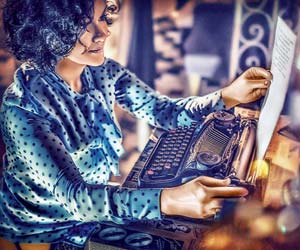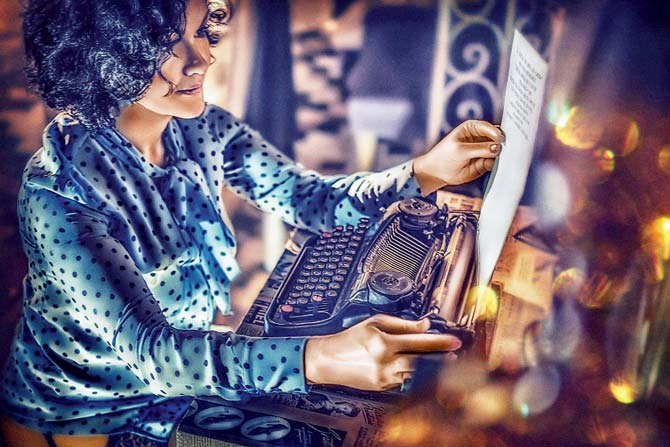Confined to walking within the apartment, it's a solace to know that, as a writer, I can choose a different kind of journey on the typewriter



By the weekend, I should have enough strength to be seated longer than 30 minutes; the goal is to operate my recently purchased second-hand Brother typewriter
ADVERTISEMENT
For the first few hours as my body struggled to acquaint itself with this strange discomfort, I almost regretted consenting to the procedure, even though I knew that the quality of my life in the last few weeks had become quite unenviable, even though I knew that given the pace at which the fibroid was growing, there seemed no other alternative than to have it removed. It was 48 hours later, when, at 6 am, I was finally encouraged to get out of bed and walk, that I felt like I was beginning to heal.
"Where does it start?" Rebecca
Solnit begins the first chapter of Wanderlust, her book on the history of walking with that line. "Muscles tense. One leg a pillar, holding the body upright between the earth and sky. The other a pendulum, swinging from behind. Heel touches down. The whole weight of the body rolls forward onto the ball of the foot. The big toe pushes off, and the delicately balanced weight of the body shifts again. The legs reverse position. It starts with a step and then another step and then another that adds up like taps on a drum to a rhythm, the rhythm of walking." My rhythm is more staggered, with a slight delay between legs, the left being compelled to be more load-bearing than my more fragile right. At first, I had to hold my swollen belly to insulate it from the impact of gravity, but over days, I acquired enough energy reserves to pace myself a bit. Yesterday, I walked down one set of stairs and up again twice, just to feel the thrill of movement. Otherwise I am still confined to walking within the confines of our apartment in Mumbai. Usually I hold my Kindle in my hand and pace across each room.
"The history of walking is an unwritten, secret history whose fragments can be found in a thousand unemphatic passages in books, as well as in songs, streets and almost everyone's adventures," Solnit says. "The bodily history of walking is that of bipedal evolution and human anatomy. Most of the time walking is merely practical, the unconsidered locomotive means between two sites." It's a strange book to read when one is under house arrest, of sorts, because every line, every connection she makes about how walking lies at the intersection between every conceivable field of knowledge, and can itself be construed as a field, makes you want to walk, incites you into action. But what better time to read her than when one is recuperating, regaining one's strength and healing. It's like storing up on literary reserves so that when I am finally deemed able, I can return to activity with more grace and gratitude.
It hasn't been easy to submit to this necessary convalescence, to be temporarily dependent on my parents, my sister, just to reach for things at the bottom of the refrigerator, or even for a blanket to spread over me when I sleep, or for each meal. It took me days to start returning friends' phone calls, because my throat felt sore from the tubes shoved down it, and because I still felt listless. But I'm trying to embrace this period of rest and restoration, trying to fill my time with superlative literature and television and music, with intermittent writing assignments.
By the weekend, I should have enough strength to be seated longer than 30 minutes; the goal is to operate my recently purchased second-hand Brother typewriter. It's been difficult to explain my excitement at this supposedly dated device. I try to communicate my enthusiasm but always fall short when someone, especially from an older generation, asks why I needed such a thing when I had a laptop. I try to speak about the backspace key. How, on a laptop or a tablet or a phone, the same key erases words as it tracks back, and how, though it performs a similar function on the typewriter, it cannot erase an already typed letter or word. Maybe I have some strange affinity for scars, or have become less inclined towards cosmetic niceties. It has something to do with creating a breadcrumb trail so that one is able to retrace the locomotive pattern of one's writerly consciousness as it imprints itself upon a page. Because writing on a typewriter comes close enough to the gesture of walking. It, too, is a form of wanderlust.
Deliberating on the life and times of Everywoman, Rosalyn D'Mello is a reputable art critic and the author of A Handbook For My Lover. She tweets @RosaParx. Send your feedback to mailbag@mid-day.com
 Subscribe today by clicking the link and stay updated with the latest news!" Click here!
Subscribe today by clicking the link and stay updated with the latest news!" Click here!







